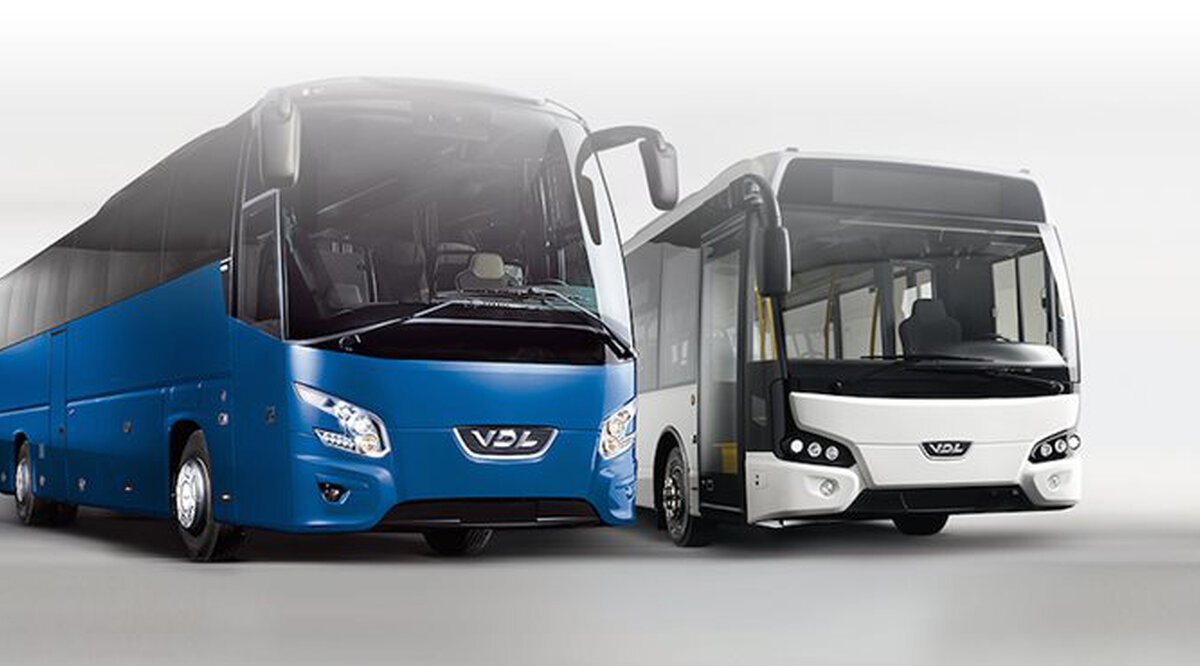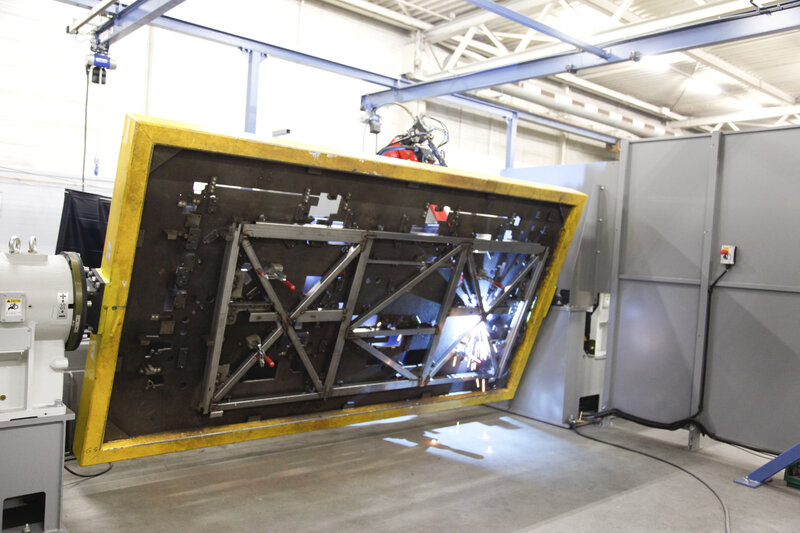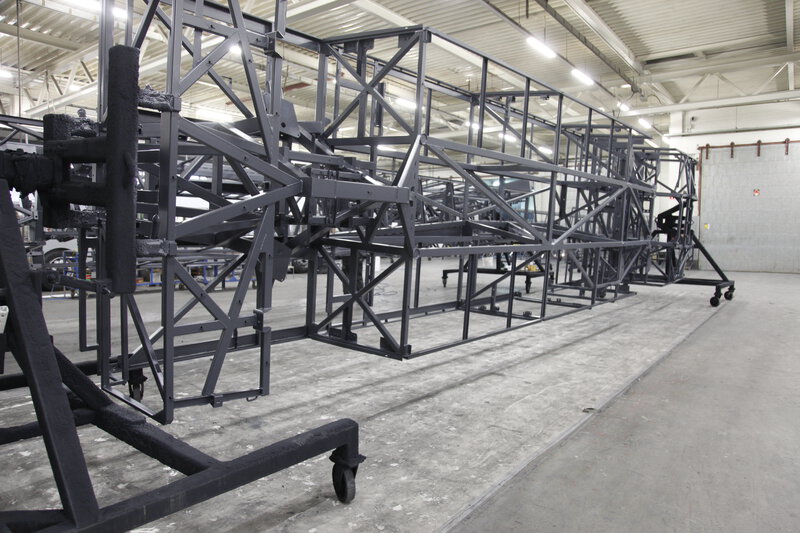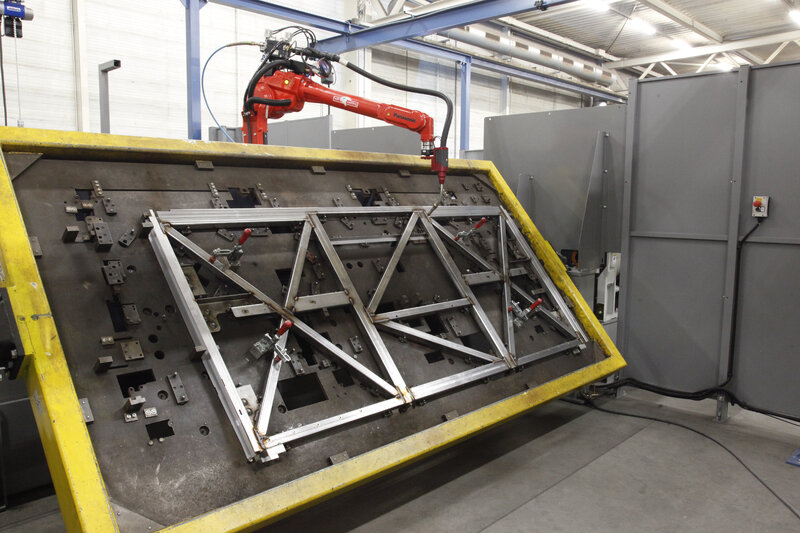Esiprosessi optimoitu
Peter de Weerd, VDL Bus Modulesin tehdaspäällikkö, oli aluksi epäileväinen ohutseinäisten putkiosien hitsaamisesta roboteilla. "Putket on sovitettava tarkasti yhteen: jopa pienimmällä epätäydellisyydellä hitsi putoaa aukon läpi. Manuaalinen hitsaus antaa sinulle enemmän hallintaa tässä. Siksi aloitimme optimoimalla sahaus- ja porausprosessin investoimalla sahakoneeseen. Valk Welding auttoi meitä myös hitsausrobotin ohjelmoinnissa. Heidän tukensa ansiosta olemme päässeet lentävään alkuun ja meillä on hitsausprosessi robotin kanssa täysin hallinnassa.
Hitsauskiinnikkeiden taustalla oleva filosofia
2D-kehysosat (poikkileikkaukset) hitsattiin aiemmin manuaalisesti suurilla hitsauskiinnikkeillä, jotka kallistettiin manuaalisesti. Peter de Weerd: "Kiinnikkeet kehitettiin jo 2 vuotta sitten sillä ajatuksella, että niitä käytettäisiin myöhemmin hitsausrobotilla. Putkikehysosien risteykset voidaan siten saavuttaa kahdelta puolelta, jotta robotti voi hitsata tuotteen ympäri. Valk Welding on toimittanut hitsausrobottijärjestelmän, jossa on neljä kiinnikkeen tukea, joissa neljä hitsauskiinnikettä (kaksi kahdessa) sijoitetaan asettimiin. Voimme käyttää näitä 4 kiinnikettä yhteensä 14 eri tuotteelle (poikkileikkauksille). Panasonic TL 1800 -hitsausrobottia käytetään tekemään 1 sarja 5 poikkileikkausta jokaiselle bussille jokaisessa tuotantoerässä ilman, että kiinnikkeitä tarvitsee vaihtaa. Tämä poistaa kaikki väliaikaisesta varastoinnista, kuljetuksesta, kiinnikkeiden vaihdoista jne. aiheutuvat menetykset."






